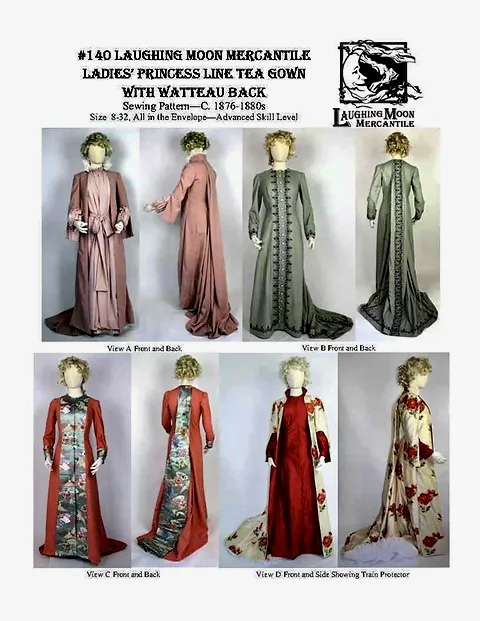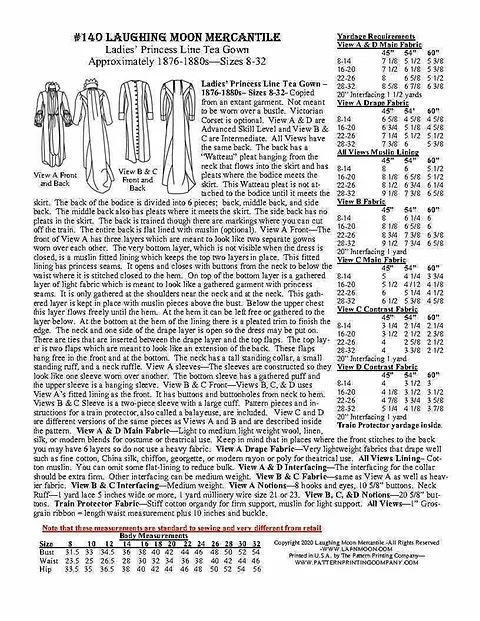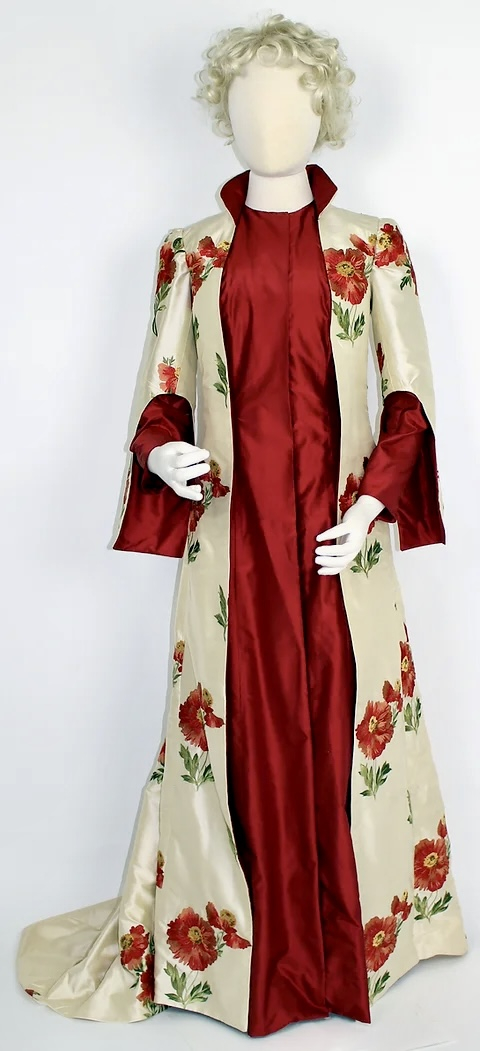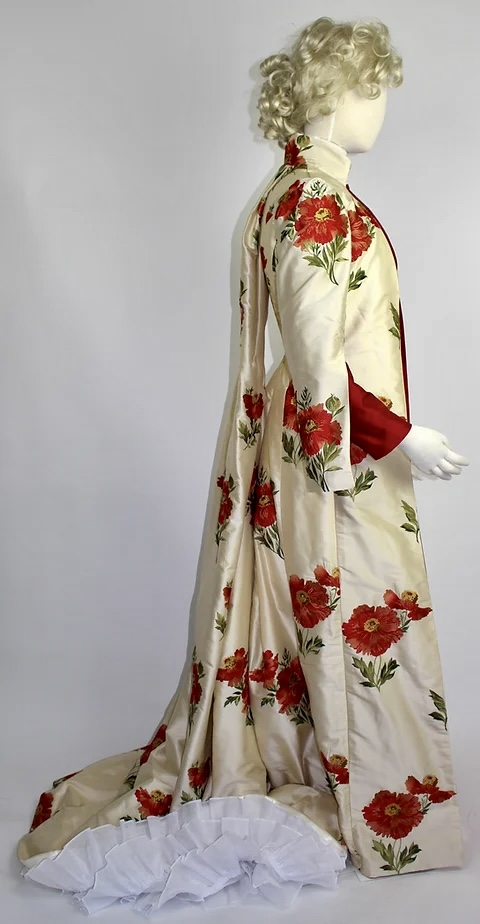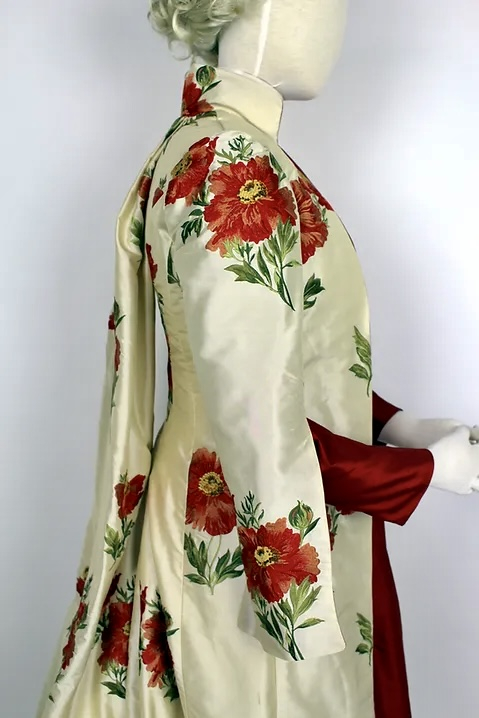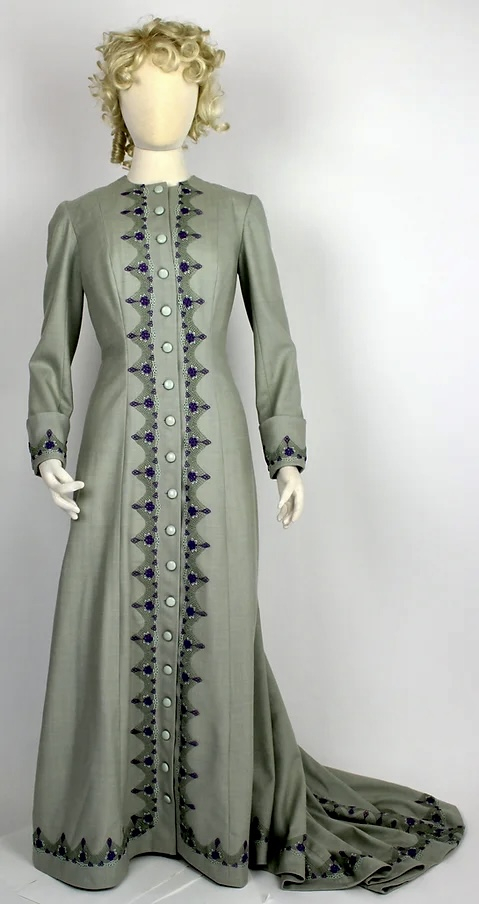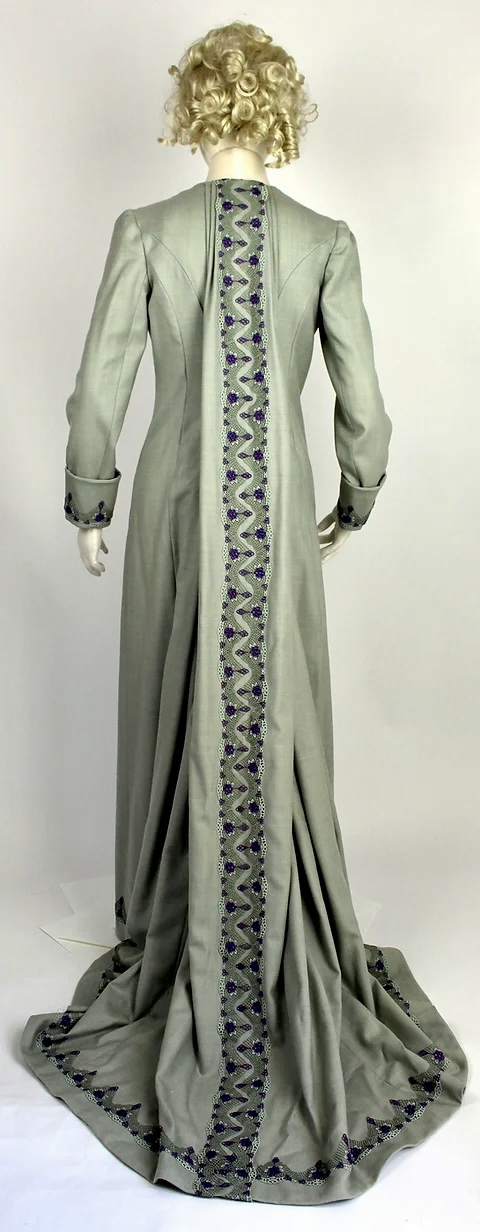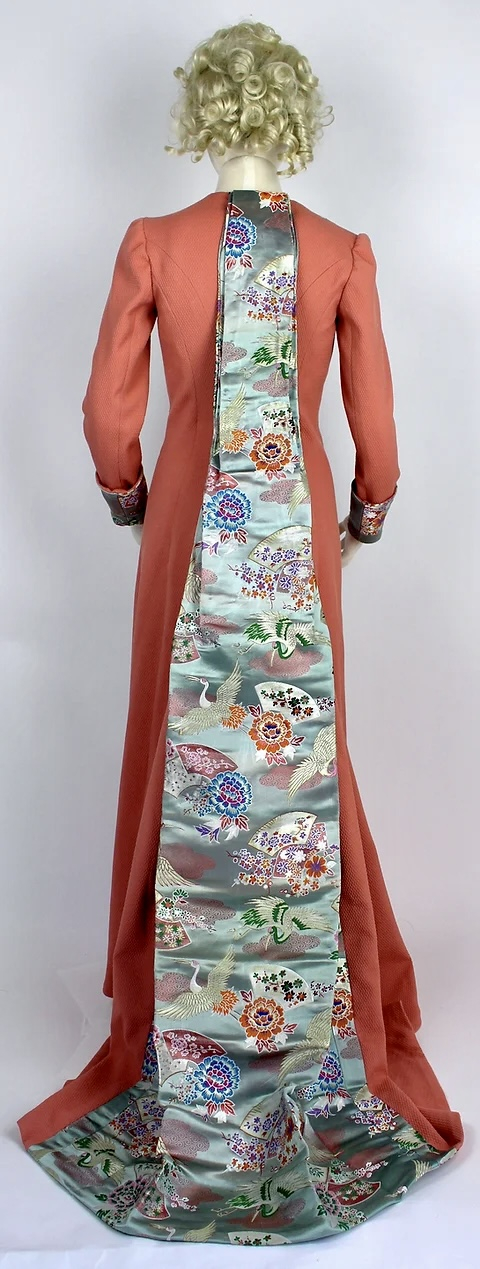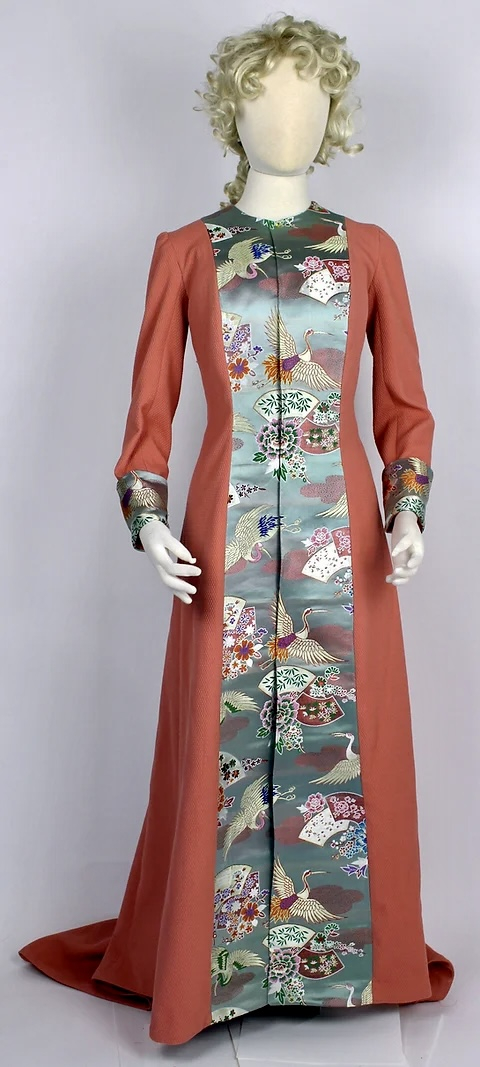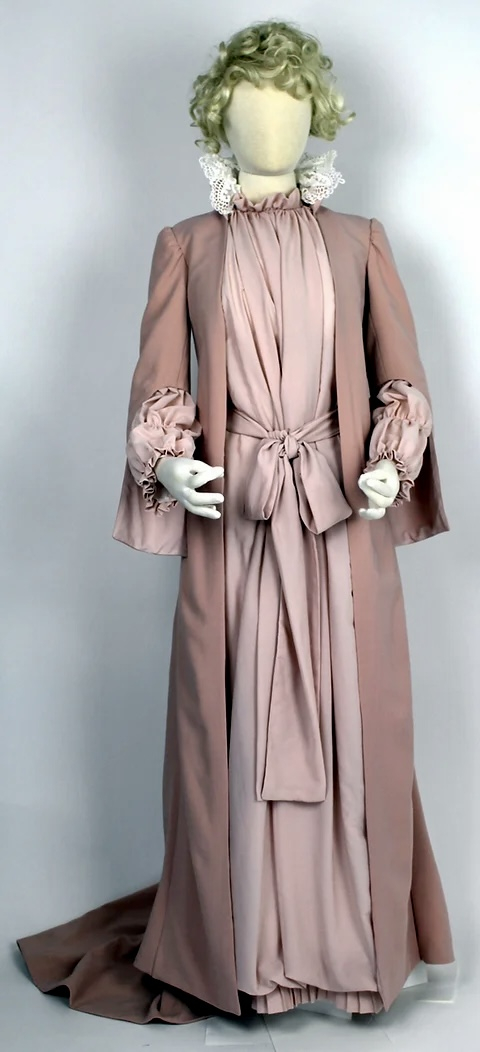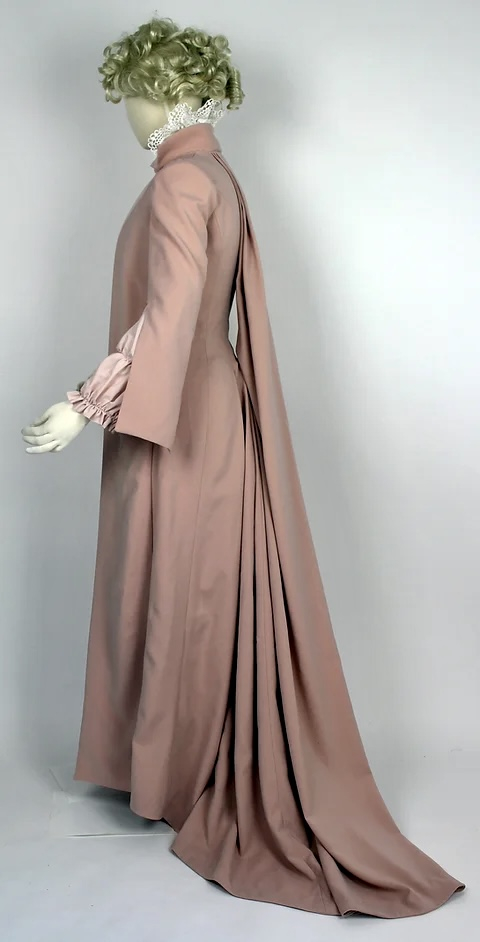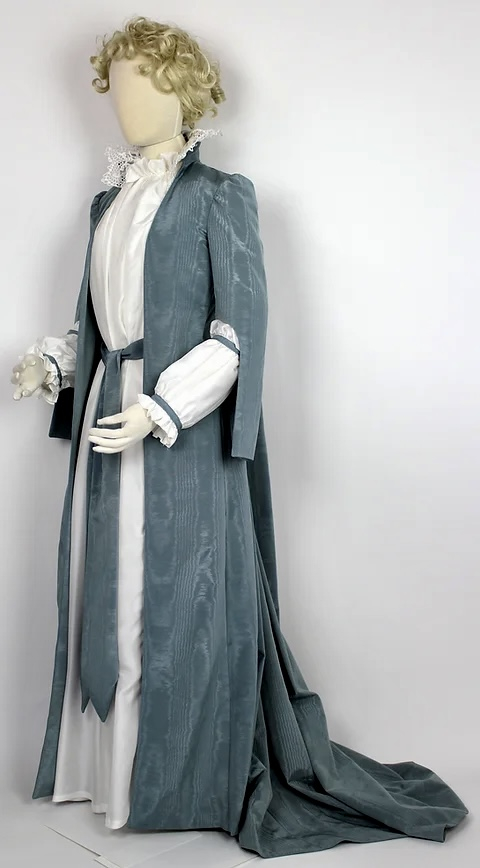Pattern # 140 Download
Ladies Princess Line Tea Gown 1876 - 1880s
Sizes 8-32
Views A & D rated as advanced sewing skill - Views B & C rated as intermediate sewing skill.
This pattern was copied from an extant garment and is not meant to be worn over a bustle. A Victorian corset is optional. View A & D are Advanced Skill Level and View B & C are Intermediate. All Views have the same back. The back has a Watteau pleat hanging from the neck that flows into the skirt and has pleats where the bodice meets the skirt. This Watteau pleat is not attached to the bodice until it meets the skirt. The back of the bodice is divided into 6 pieces; back, middle back, and side back. The middle back also has pleats where it meets the skirt. The side back has no pleats in the skirt. The back is trained though there are markings where you can cut off the train. The entire back is flat lined with muslin (optional). View A Front -The front of View A has three layers which are meant to look like two separate gowns worn over each other. The very bottom layer, which is not visible when the dress is closed, is a muslin fitted lining which keeps the top two layers in place. This fitted lining has princess seams. It opens and closes with buttons from the neck to below the waist where it is stitched closed to the hem. On top of the bottom layer is a gathered layer of light fabric which is meant to look like a gathered garment with princess seams. It is only gathered at the shoulders near the neck and at the neck. This gathered layer is kept in place with muslin pieces above the bust. Below the upper chest this layer flows freely until the hem. At the hem it can be left free or gathered to the layer below. At the bottom at the hem of the lining there is a pleated trim to finish the edge. The neck and one side of the drape layer is open so the dress may be put on. There are ties that are inserted between the drape layer and the top flaps. The top layer is two flaps which are meant to look like an extension of the back. These flaps hang free in the front and at the bottom. The neck has a tall standing collar, a small standing ruff, and a neck ruffle. View A sleeves - The sleeves are constructed so they look like one sleeve worn over another. The bottom sleeve has a gathered puff and the upper sleeve is a hanging sleeve. View B & C Front Views B, C, & D uses View As fitted lining as the front. It has buttons and buttonholes from neck to hem. Views B & C Sleeve is a two-piece sleeve with a large cuff. Pattern pieces and instructions for a train protector, also called a balayeuse, are included. View C and D are different versions of the same pieces as Views A and B and are described inside the pattern.
